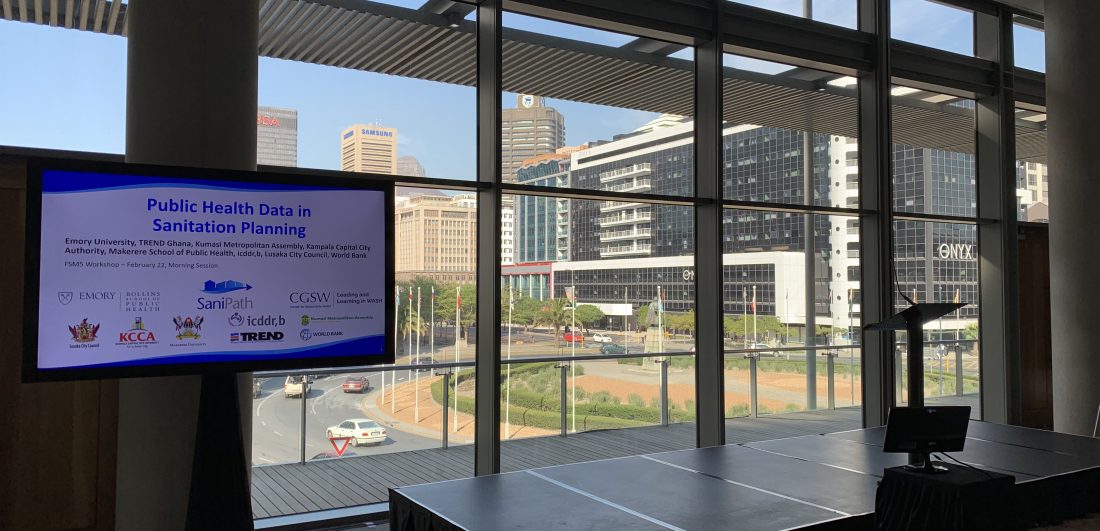July 10, 2019
In
Publications
Authors: D. Berendes, J. Leon, A. Kirby, J. Clennon, S. Raj, H. Yakubu, K. Robb, A. Kartikeyan, P. Hemavathy, A. Gunasekaran, S. Roy, B. Ghale, J. Kumar, V. Mohan, G. Kang, CL Moe
Abstract:
Background: Open drains are common methods of transporting solid waste and excreta in low-income urban neighborhoods. Open drains can overflow due to blockages with solid waste and during rainfall, posing exposure risks. The goal of this study was to evaluate whether pediatric enteric infection was associated with open drains and flooding in a dense, low-income, urban neighborhood.
Methods: As part of the MAL-ED study in Vellore, India, a cohort of 230 children provided stool specimens at 14–17 scheduled home visits and during diarrheal episodes in the first two years of life. All specimens were analyzed for enteric pathogens. Caregivers in 100 households reported on flooding of drains and households and monthly frequency of contact with open drains and flood water. Household GPS points were collected. Monthly rainfall totals for the Vellore district were collected from the Indian Meteorological Department. Clustering of reported drain and house flooding were identified by Kulldorff’s Bernoulli Spatial Scan. Differences in enteric infection were assessed for household responses and spatial clusters, with interactions between reported flooding and rainfall to approximate monthly drain flooding retrospectively, using multivariable, mixed-effects logistic regression models.
Results: Coverage of household toilets was low (33%), and most toilets (82%) discharged directly into open drains, suggesting poor neighborhood fecal sludge management. Odds of enteric infection increased significantly with total monthly rainfall for children who lived in households that reported that the nearby drain flooded (4% increase per cm of rain: OR: 1.04, 95% CI: 1.00–1.08) and for children in households in a downstream spatial cluster of reported drain flooding (5% increase per cm of rain: OR: 1.05, 95% CI: 1.01–1.09). There was no association between odds of enteric infection and frequency of reported contact with drain or floodwater.
Conclusions: Children in areas susceptible to open drain flooding had increased odds of enteric infection as rainfall increased. Results suggested that infection increased with rainfall due to neighborhood infrastructure (including poor fecal sludge management) and not frequency of contact. Thus, these exposures may not be mitigated by changes in personal behaviors alone. These results underscore the importance of improving the neighborhood environment to improve children’s health in low-income, urban settings.
Access paper here





